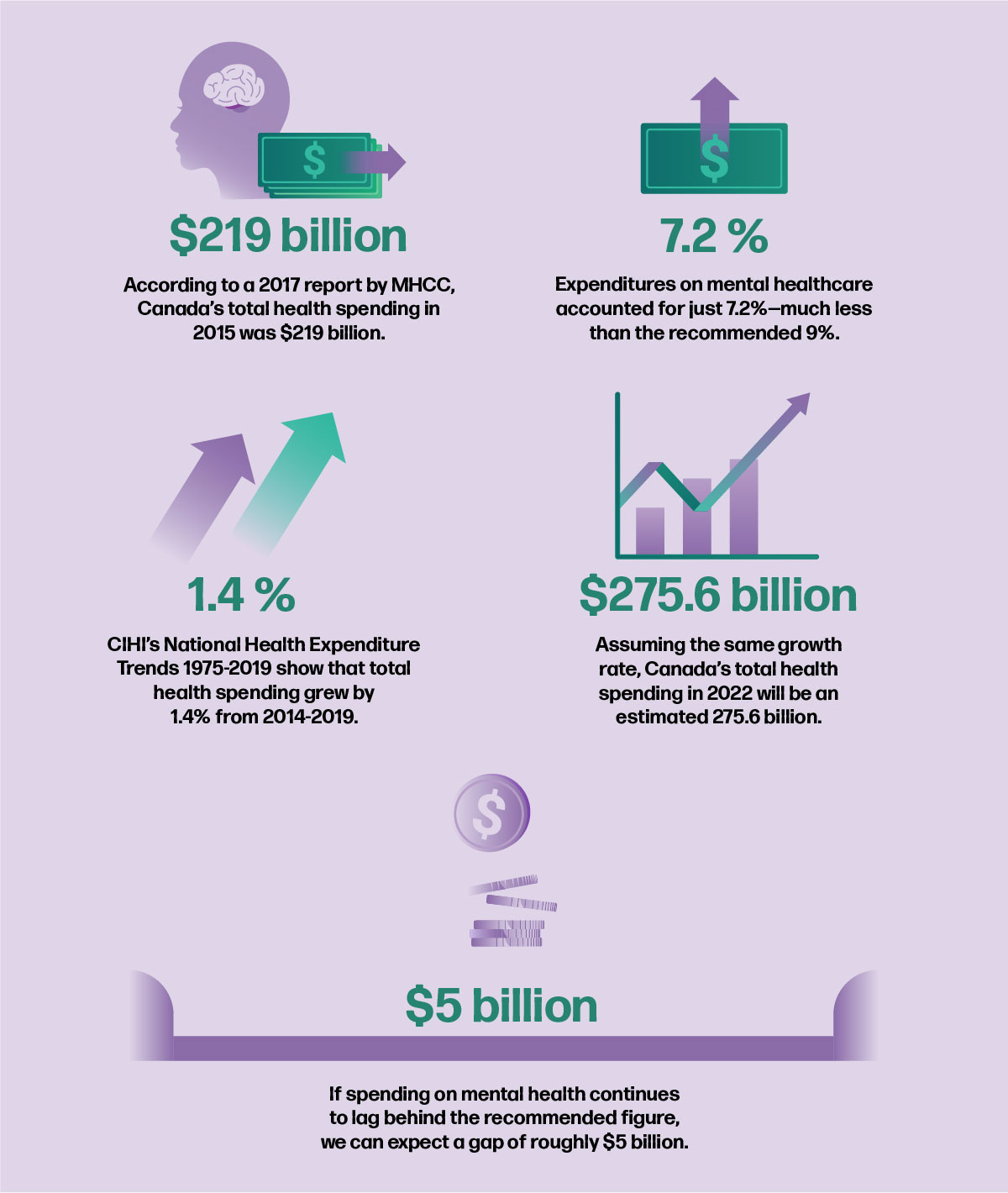No conversation has undergone quite the paradigm shift over the last several years as the one surrounding mental health.
For too long people suffered in silence, believing mental health issues were private and taboo. However, society is now coming to realize that mental health is just as important as physical health, and therefore must be monitored, maintained, and prioritized.
Our emotional, psychological and social well-being affects many aspects of our day-to-day lives. It also determines how we handle stress, relate to others, and make choices. Ultimately, it’s also an important indicator of a society’s overall well-being.
While the sentiment around prioritizing mental health has improved, our resources are lacking. The Canadian public healthcare system is only equipped to deal with acute mental illness and leaves the vast majority of patients without effective, affordable and timely treatment for mild to moderate problems.
More so, mental health services continue to be focused on responsive rather than reactive solutions. While there are plenty of platforms available for individuals to access resources for keeping mental health in check, like mindfulness and meditation apps, there is still an opportunity for greater breadth and depth of solutions.
Employers are stepping up to bridge the mental health gap
Thankfully, employers are taking notice of this shift in perspective. For individuals, addressing personal mental health issues can be complex and costly. Most organizations see it as a competitive priority and a moral imperative to invest in solutions and coverage that lessen the burden for employees and allow them to get the care they need.
Of course, it also benefits employers to treat mental health seriously. Taking a preventive approach by offering solutions and resources to employees can increase productivity and boost morale.
Investment in mental health services and programs points to a long-lasting and secular trend. Employers are even providing additional funding over government-funded health care programs. These additional sources of funding will influence the plan design of employer-sponsored benefit programs and government funded programs.

We’re at a critical point
The business of mental health is at an inflection point, accelerated by the destigmatization of mental health and the need to combat wide-sweeping effects of events, such as the onslaught of COVID-19 on mental well-being. Never has there been more urgency— nor an opportunity —to invest resources where they’ll make a substantial difference.
We’re seeing increased momentum towards adapting solutions such as digital mental health platforms, as many people struggle with the short and long-term effects of social isolation. However, deeper integration of these solutions is still necessary.
According to a 2017 report by MHCC, Canada’s total health spending in 2015 was $219 billion. Out of this, expenditures on mental healthcare accounted for a mere 7.2%, significantly less than the recommended 9%.
CIHI’s publication titled National Health Expenditure Trends 1975 to 2019, highlights that total health spending grew by 1.4% from 2014 to 2019. Assuming the same growth rate, Canada’s total health spending in 2022 will be an estimated $275.6 billion. If spending on mental health continues to lag behind the recommended figure, we can expect a gap of roughly $5 billion.
We can’t precisely predict macroeconomic outlooks, the trajectory of COVID-19, or the time needed to address the gaps in ensuring quality, reliability, holistic and safe care to patients. If public health officials and other stakeholders collaborate with innovators, health officials, and organizations to continue to find innovative ways to provide mental health services to Canadians, we’ll be on the right track. We can only hope that the paradigm-shift in our approach towards preventive measures of mental health continues to evolve and is taken seriously at a governmental level.




